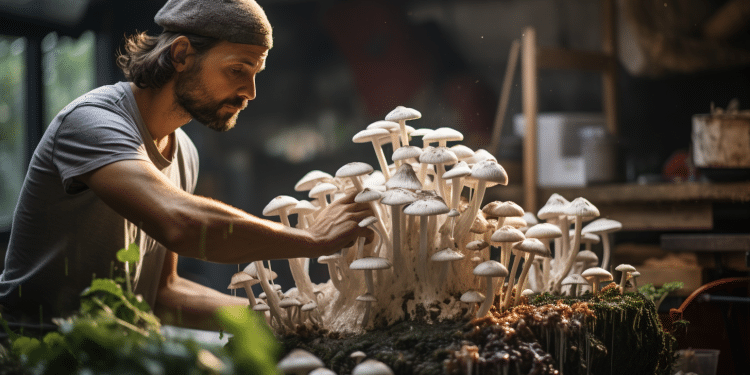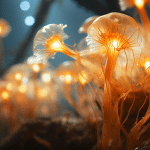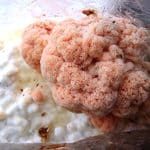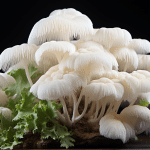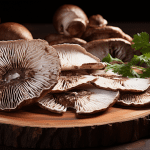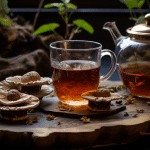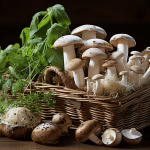Learning to grow mushrooms is easier than you might think. Much of the same information applies whether you are looking to grow small amounts of mushrooms in your home as a hobby, or if you are looking to get into growing mushrooms on a commercial scale as a business.
Some of us have grown up watching our parents out in the yard harvesting tomatoes and carrots, but it is still pretty rare to see people growing their own mushrooms at home. The idea of growing your own mushrooms may sound mysterious and difficult unless you have had any experience doing so before. However, donat let that scare you away from the idea.
Once you understand the basics, growing your own edible mushrooms is similar to growing any other fruit or vegetable. In this article, you will learn everything about the lifecycle of mushrooms, which types of mushrooms you should grow, and how to grow them. If you get confused about any terminology used in this article, please see the glossary at the end.
Easiest Way to Grow Mushrooms at Home or On Small Farms
Mushrooms can be a great way to vary up what crops you are growing in your home or small-scale homestead. In fact, humans have been growing mushrooms in small, enclosed spaces for hundreds of years. Mushrooms are extremely versatile, able to be grown in a variety of different mediums and in tiny spaces. You can grow them indoors in your spare room or with basement space, or you can even grow them along with your veggie garden outdoors.
If growing mushrooms is something you have wanted to do for some time, there is no better time than right now to get started. Even if you live in an apartment, you will get plenty of room to begin growing your delicious, nutritious mushrooms. Unlike traditional crops, you do not have any dirty soil to worry about, either. So, they are ideal for growing in your home.
Learn How to Grow Mushrooms
When growing mushrooms, you are basically simulating the same lifecycle mushrooms experience in the wild. But with a few key changes made for maximum production, as well as some other factors.
Step 1: Mushroom Spawn
Growing mushrooms starts with getting the spores, or the young. We already know what a spore is, but what is mushroom spawn? It is any substance which already has a mycelium growing on it, that you can use to accelerate the process of growing a mushroom. Using either starter cultures or spores, you will need to make your own mushroom substrate. A substrate is any substance on which the mycelium can grow.
Mushrooms are usually called “fruiting bodies” for the mycelium. Different species of mushrooms grow on a variety of substrates. Some aggressive species, such as oyster mushrooms, grow on coffee grounds, whereas others need wood for digestion and energy.
Step 2: Inoculation of Mushroom Substrate
The next step is to get inoculated. This is when you place the spores, or mushroom larvae, into the medium, otherwise known as a growing medium. While it is not required, it is usually done in a sterile environment in order to minimize the chances that moulds or other fungal species will be able to compete with the mushrooms that you are trying to grow.
Step 3: The Incubation Phase
Once you have your inoculated substrate, the next step is incubating it. This usually involves placing your substrate in a dark, warm location for a period of a few weeks to several months. During that time, your mycelium completely colonizes your substrate, and at the end of the process, you often will have a white, monolithic mat of mycelium at the exterior of your substrate.
Step 4: Fruiting The Mushrooms
You will then put your media in the berry environment once your incubation time is over. This typically involves cutting the bags in which your substrates are stored so they can get exposed to fresh air. The substrate is sprayed with water during this phase all day long to keep it moist.
After several days, you will begin to see pinheads (primordia) form on the substrate. These will eventually grow to be full-sized mushrooms.
Harvesting & Further Crops
The time of your mushrooms harvesting will vary depending on which species you are growing. Usually, it just involves gently pulling or twisting a maturing mushrooms caps off of the substrate that it is growing on. Some species of mushrooms can be harvested and regrow multiple times.
Each wave of new mushrooms is called a flush. Once your substrate is exhausted of all energy, it stops producing mushrooms. As you keep using up your starting mycelium to inoculate more and more batches of substrate, eventually it goes through a process called senescence.
This is the deterioration process all living things undergo with age. It is essentially the same as aging in mushrooms. The mycelium loses strength and ability to grow and split. Once your mycelium starts getting weak, you need to either obtain a new starter or start growing with new spores.
You can find our favorite capsules, powders, gummies, and other products on the following pages of our website and learn more about each individually:
Additional Resources:
